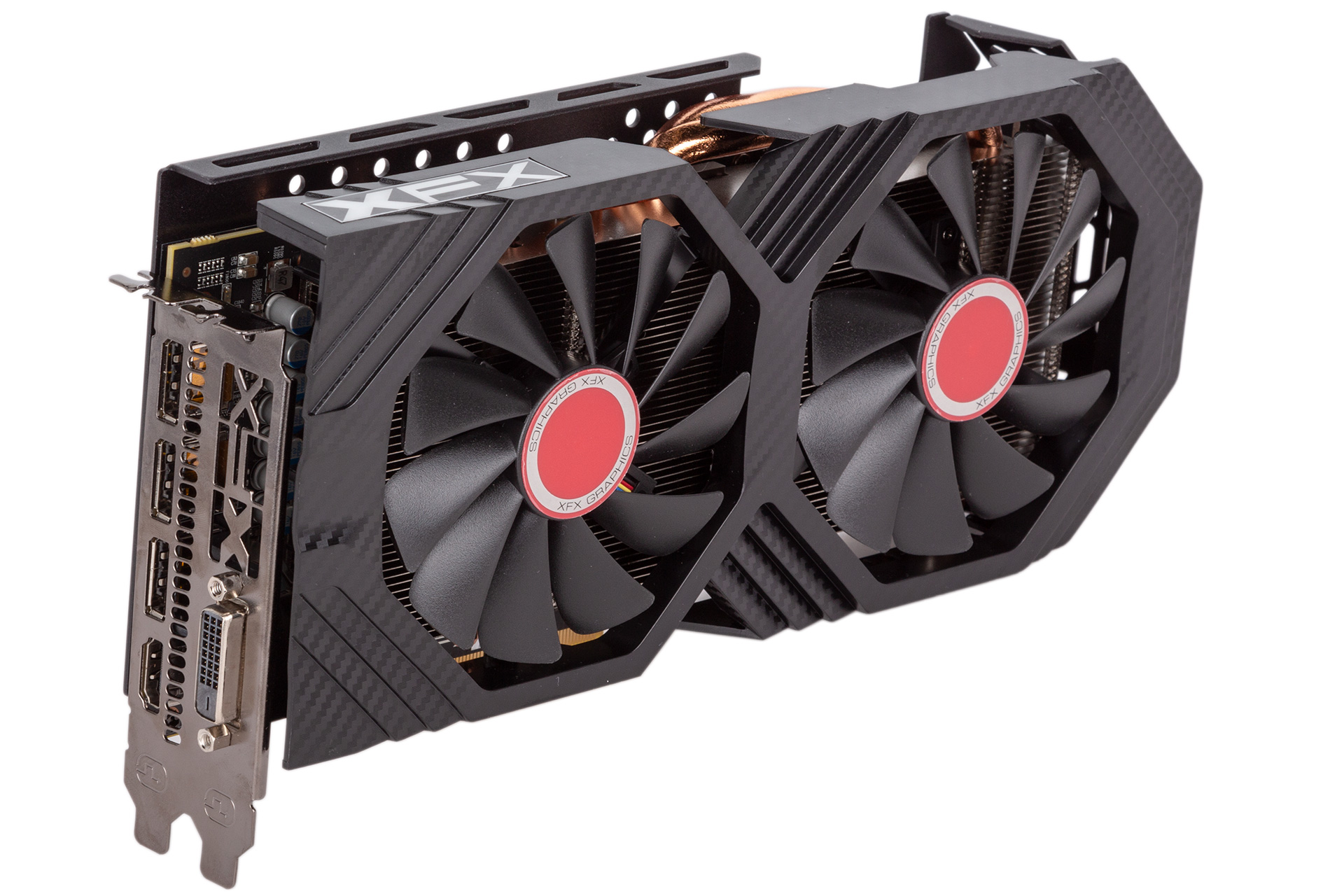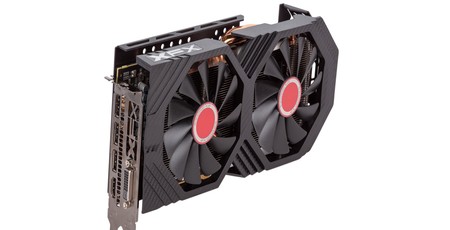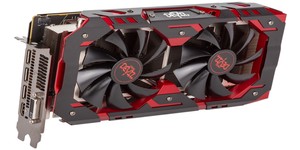Performance Analysis
As expected, the RX 590 inserts itself into the performance gap between RX 580/GTX 1060 6GB and RX Vega 56/GTX 1070, typically coming much closer to the lower spec cards. To illustrate, across all tests this RX 590 is on average 14 percent faster than a GTX 1060 6GB (with 8Gbps memory) and 10 percent ahead of the Sapphire RX 580 8GB. Meanwhile, reference RX Vega 56 and overclocked GTX 1070 figures are both about 30 percent above what we see here.
As ever, such figures do disguise individual benchmark differences. RX 590 versus RX 580 is obviously very consistent since so little has changed, but RX 590 versus GTX 1060 does have considerable variation. DX12 and Vulkan largely favour AMD, with 20 percent or higher improvement achieved in both Deus Ex (DX12) and Wolfenstein (Vulkan) when it comes to average frame rates, and in the Cyan Room VRMark benchmark the RX 590 is a whopping 39 percent faster. Nvidia’s drivers continue to make a mess of Total War: Warhammer II’s benchmark as well, resulting in stutter and very low minimums. GTX 1060 does win in one test, though, which is World of Tanks, although only marginally, but it does mean the odd DX11 title might favour Nvidia hardware.
AMD’s positioning of the card as a 1080p powerhouse proves accurate, as the RX 590 is a real heavyweight at this resolution, and it has considerable striking power at 1440p too, though more demanding games won’t be playable with maximum detail. It’s easily capable of VR gameplay as well.

As implied by the TDP figures, power consumption does take a real hit. Our system required ~40W more than with the RX 580 and a whole 80W more than with the GTX 1060 6GB, so the new process node doesn’t appear to be much more efficient. We’re talking GTX 1080 levels of consumption here – hardly ideal from a card so much slower.
This translates to an impact on thermals and noise as well. Regarding the former, the GPU temperature will be considerably higher than on a GTX 1060, but in fairness to XFX the Fatboy does keep running consistently at full speed without throttling – it’s just going to sweat more doing so. It can get quite noisy too, with those dual 100mm fans approaching 2,000 RPM under sustained load, easily enough to be audible and potentially annoying, though the actual tone subjectively wasn’t so bad. Not throttling is certainly the key takeaway, but we expected a little more from a chunky cooler like this.
Overclocking results are where you’d expect them to be, but again you are going to have to deal with more power consumption, more heat, and more noise if you pursue this route. We don’t claim it was the most efficient attempt, but we’d say it’s better to leave this card as it comes unless you’re desperate for a few more frames per second.
Conclusion
By AMD’s own admission in a pre-launch briefing call, it ‘wanted something quick and dirty’ that its partners could easily build into their existing stacks (I must not take quotes out of context, I must not take quotes out of context...). By and large, it seems to have succeeded. By not requiring overhauling PCB redesigns, AMD can help keep production costs down, and RX 590 looks like it will come in pretty much at RX 580 price levels while adding 10 percent performance. It eats through power like Homer Simpson eats through donuts - that's the 'dirty' side - but AMD reckons that's a sacrifice gamers will be willing to make, and it's probably right.
It’s hardly going to be a massive market shake up, then, but honestly it’s just nice to see something new here, and the games bundle AMD is launching looks to be great value (quality of all three games, of course, remains to be seen) and should win it further favour with gamers sick of reading about hardware they can’t afford.

Delivering over 15 percent more performance than GTX 1060 6GB at very similar pricing, and often a lot more than this is more forward-looking APIs and applications, the RX 590 is the new card to have in the upper mainstream £250-£300 price bracket, and it seems certain price cuts to RX 580 and GTX 1060 will follow, which should benefit those shopping on lower budgets, though it's unlikely to inspire similar cuts in the cards above it, as the distance between them is still hefty. It’ll see off any game at 1080p, and it would also tide you over for a while if you have a 1440p monitor upgrade on the horizon (or high refresh rate 1080p). FreeSync continues to be one of AMD’s strongest assets, and the considerably lower cost of entry into variable refresh rate gaming makes for another argument over opting for the green team’s competing hardware. Of course, we’ve yet to see GTX 1060 performance with GDDR5X memory, but that won’t change the FreeSync argument.
Coming back to the chubster, XFX’s Fatboy card is, honestly, nothing special, but we have to give it kudos for coming in at £250 with an overclock applied - even if it creeps to around £270 it wouldn't be a bad deal, especially with those three games thrown in. Instinct tells us that other coolers will do better than this one, which is semi-skimmed at best, but we may be proven wrong, and there’s no guarantee they’ll be as cheap. It’s the value that really earns this card its Recommended badge (plus it’s our first RX 590), but it’s well worth seeing what competing cards bring to the table too.


MSI MPG Velox 100R Chassis Review
October 14 2021 | 15:04









Want to comment? Please log in.